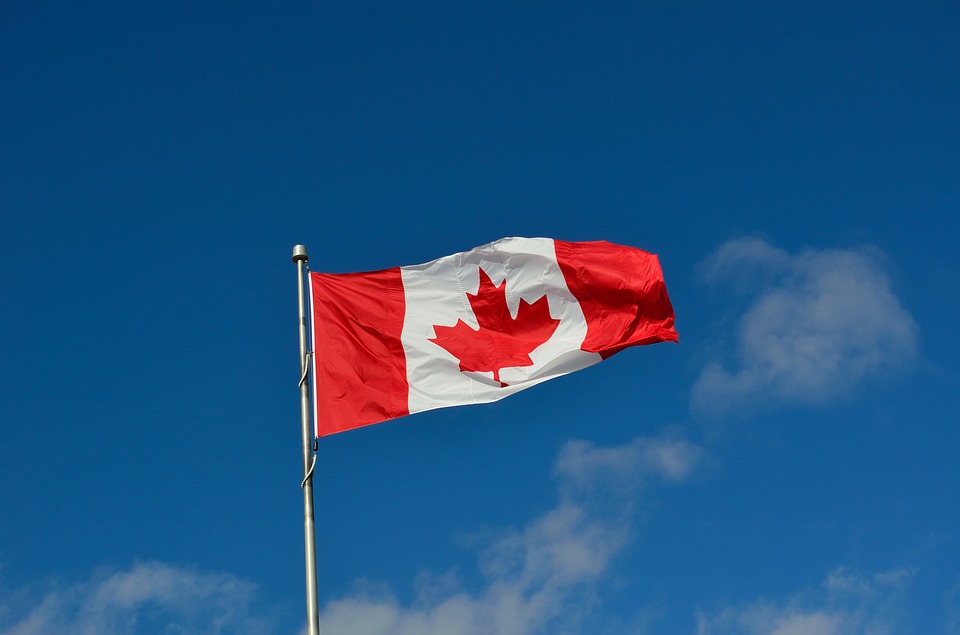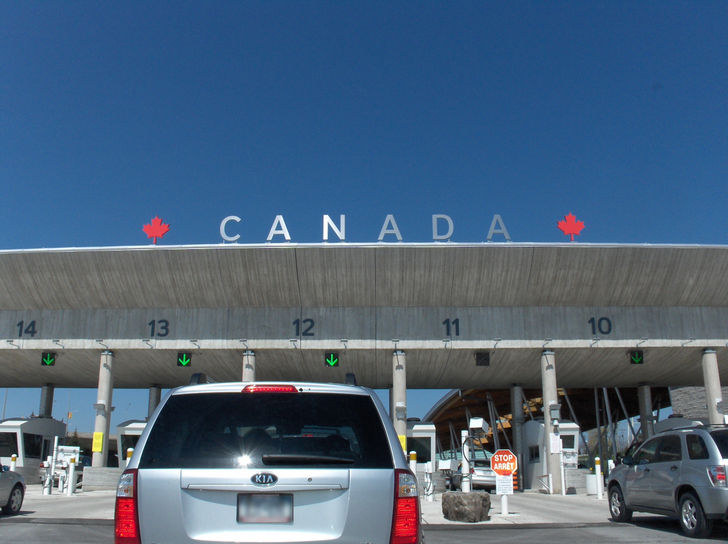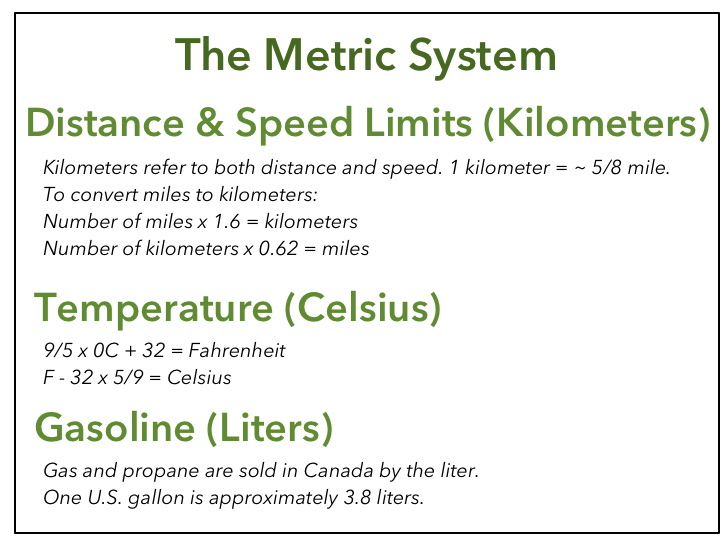RVing around Canada is a traveler’s dream come true. From Victoria, British Columbia with its perfected English charm, to the French speaking province of Quebec, Canada offers up tremendous variety from coast to coast.
If you’re planning a trip to Canada with your RV there are a few things to know. Keep in mind that while Canada is similar to the United States in many ways, it’s also a different country with different laws, culture, government and currency.
Crossing the Canadian Border
Before you get to Canada you need to cross the border. Crossing international borders in recent years has become a bit more complicated due to increased security. The best way to ensure a smooth crossing is to know the restrictions and requirements ahead of time.
Bring This Stuff
- U.S. Passport or Enhanced Drivers License.
- Vehicle and RV registration.
- For the pets bring proof of current rabies vaccination, plus a vet-signed wellness certificate that is 30 days old or less.
- For the kids bring along a passport or birth certificate and a consent form if both parents aren’t present.
Don’t Bring This Stuff
- Pepper spray, mace, or tasers: This restriction does not includes bear spray.
- Guns: This one is a little complicated because while certain types of guns are outlawed in Canada, others are legal but subject to stringent regulations. This means things can get complicated fast. For example, shotguns are allowed with a permit, but they are not allowed in Canadian National Parks, so if you disclose that you’re visiting a national park the gun may be confiscated no matter how many permits you have. The most common advice about bringing a gun to Canada — don’t bother, guns are not common in Canada and generally regarded as unnecessary.
- Alcohol, meat, vegetables, fruit: Bring these items in limited quantities only. Some of the allowed quantities are perfectly reasonable (you can bring up to 44 lbs of frozen produce per person), while others might be limiting for some (the alcohol limit is 2 bottles of wine, 1 bottle of liquor and 24 cans of beer). In general, the most restricted items are dairy products and fresh fruits and vegetables.
Click here for the full list of what you can and cannot bring, or here for rules regarding alcohol. - Raw poultry and eggs: There is currently a ban on raw poultry and eggs (including raw pet food containing poultry) entering Canada from the U.S. The ban is restricted to specific states of origin where Avian Flu is prevalent. As of right now — June, 2016 — the only state of origin listed is Indiana. A few months ago it was Washington and Oregon. Who knows what state it will be next week. Be sure to check with the Canada Border Services Agency before crossing. Or better yet, ditch the poultry altogether to avoid the hassle.
- Firewood: Most RVers know not to transport firewood between states because of the potential to spread insects and disease. The same goes for Canada. Don’t try to save a few bucks by bringing along that extra bundle.
RVing Around Canada
Congratulations! You made it into Canada, now that you’re here how about a few guidelines for enjoying your stay?
Get Used to the Metric System
Canada uses the metric system. Learn it before you go to avoid headaches and confusion. Distance, speed limits, and liquid and dry weight measurements are in the metric system. This means fuel is bought in liters and distance and speed is measured in kilometers and kilometers per hour.
Here’s a helpful cheat sheet you can print out and keep inside the RV.
Funny Money – Currency In Canada
There’s really nothing funny about Canadian money, but when the bills are adorned with bright colors and the coins are called “loonies” and “toonies” one can’t help but giggle. All joking aside, the Canadian monetary system is not that different from the US system, expect the money looks different and is worth more or less depending on the exchange rate.
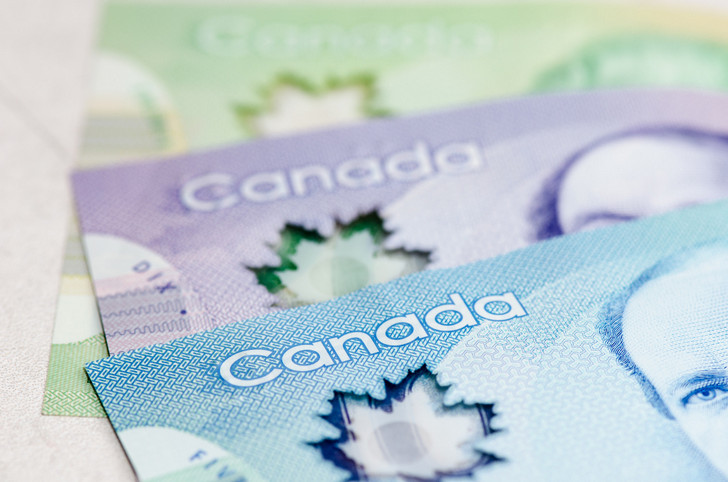
- Most places will accept US dollars, but it may be at par, which is to your disadvantage when the US dollar is worth more than the Canadian dollar.
- Exchange your money at a bank instead of a mall or store to avoid fees and to get the best exchange rate.
- VISA and MasterCard are accepted in most places. American Express can be used in some places, and Discover hardly anywhere. Be aware that most credit card transactions in Canada involve a currency exchange and will incur a fee of $1-5.
- Be sure to call your credit card ahead of time and tell them you are traveling to Canada so they don’t think your card’s been stolen and put a hold on it.
- Debit cards are widely accepted and ATMs are found at most grocery stores, gas stations, etc.
- There are no $1 bills or pennies. Instead prices are approximated to nickels and they have a $1 coin called a loonie and $2 coin called a toonie.
Connecting to the Internet In Canada
Most travelers these days prefer to have cell service and a data connection. What was once a luxury is now considered a necessity as we use technology for routing, research, and staying in touch with others. How much connectivity you need, and how reliable that coverage will be depends on your situation, and where in the country you plan to travel.
WiFi Connectivity
The easiest and cheapest way to stay connected when RVing around Canada is to utilize public WiFi. You can find it in such places as rest areas, visitor centers, campgrounds, and the ever popular Tim Hortons restaurant chain.
Cell and Data
If you need to be connected on a more constant basis and are willing to shell out a few bucks there are a few options. The first is to use your existing carrier and simply pay extra for phone and data. The cost will depend on the carrier, but if you only need voice and data for emergencies or checking a few emails this can be an affordable option.
If you want or need more coverage, look into a prepaid T-Mobile plan. This voice and data plan can be used all over Canada and roams to different towers to give you the best coverage. Also, some Cricket Wireless and AT&T prepaid plans allow 50% usage in Canada.
Getting Around in Canada
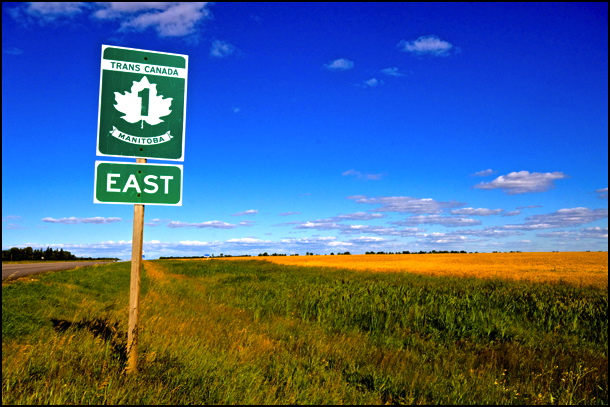
Canada is a huge country, but that doesn’t mean it needs to be hard to get around. Most travelers will only travel a couple hundred miles north of the U.S. border where the majority of roads and cities are located. This area of the country is populated with roadside gas stations and other services. However, if you go farther north (say, you’re driving all the way to Alaska) it does get more isolated and gas stops are less frequent. Keep these tips in mind when RVing around Canada.
- Save on internet usage by using a GPS that doesn’t rely on online data or connectivity. If you have a Garmin, Rand McNally, or any other type of GPS that doesn’t utilize online data you’re all set. However, if you use Google Maps on your iPad for navigation, you may want to rethink your strategy.
- Paper Maps. Yup, these still exist. Brush up on your map reading skills, get yourself a good atlas and some detailed maps of the areas where you’ll be traveling, and remember what it was like to take a road trip circa 1980.
- Visitor Centers are tour friends. You can find these in most town and cities. Stop by for free maps and advice.
Insurance and Safety While Traveling in Canada
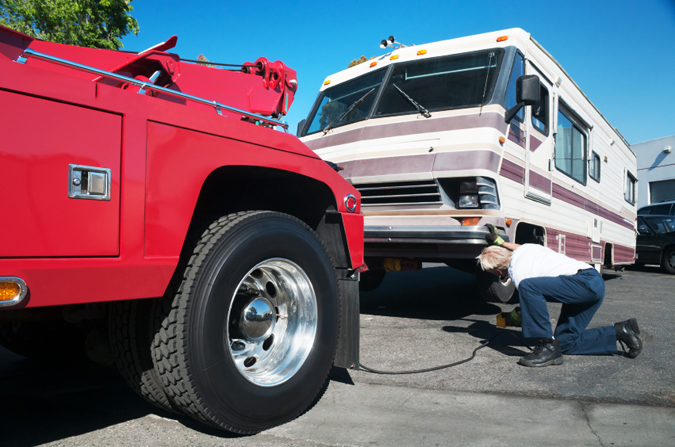
Most RV and auto insurance policies extend their coverage to Canada. It would still be wise to call your insurance company and make sure you’re covered. Also, ask about obtaining a Canadian Non‐Resident Inter‐Province Motor Vehicle Liability Insurance Card. Think of it as the equivalent of your state’s insurance card that is valid in Canada. This card proves you have insurance that meets the minimum requirements of each province.
There’s no penalty for not carrying this card, and your insurance will still cover you without it, but but if you have an accident this card will greatly reduce hassle.
What about roadside assistance? Does your current plan offer coverage outside of the United States? Best to find out before you need to use it.
Free Overnight Camping in Canada
There are plenty of places to camp in Canada. From the over one thousand Provincial Parks, countless national parks, and a multitude of privately owned family style campgrounds, resorts, and large commercial parks, there will be no shortage of places to spend the night, the week, or even an extended stay.
But what about if you simply need a quick place to spend the night while RVing around Canada? Much like in the US, there are several options for free overnight parking in Canada.
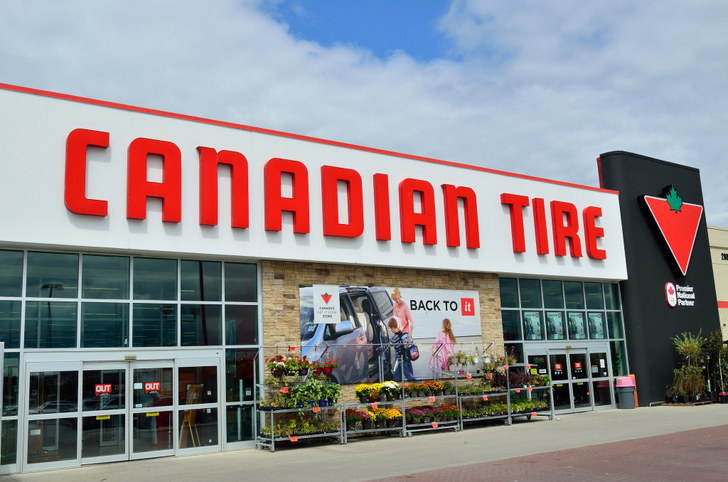
- Walmart: Some Canadian Walmarts allow overnight parking and some do not. Use the Allstays website or app to check which ones allow and which prohibit. When in doubt, always go in and ask the manager.
- Truck Stops: Truck stops are an easy — if not very quiet — place to spend a night. Again, use the Allstays app to locate them (pro tip: you can download maps from Allstays for offline use).
- Rest Areas: Some Canadian rest areas allow parking for up to 10 hours.
- Canadian Tire: Your go-to store in Canada for anything car, sports, tools, outdoors related. Some also allow overnight parking. Call ahead and ask.
- Casinos: Many casinos allow free overnight parking. Check the website casinocamper.com.
- Roadside Pull Offs and Turnouts: This one really depends on where you are traveling in Canada. For example, in northern British Columbia and the Yukon Territory it’s common practice to park overnight in pull offs unless there’s a sign that specifically states otherwise. In the provinces of Ontario and Quebec, this is not the case and this practice could result in a knock on the door in the night, or a fine.

